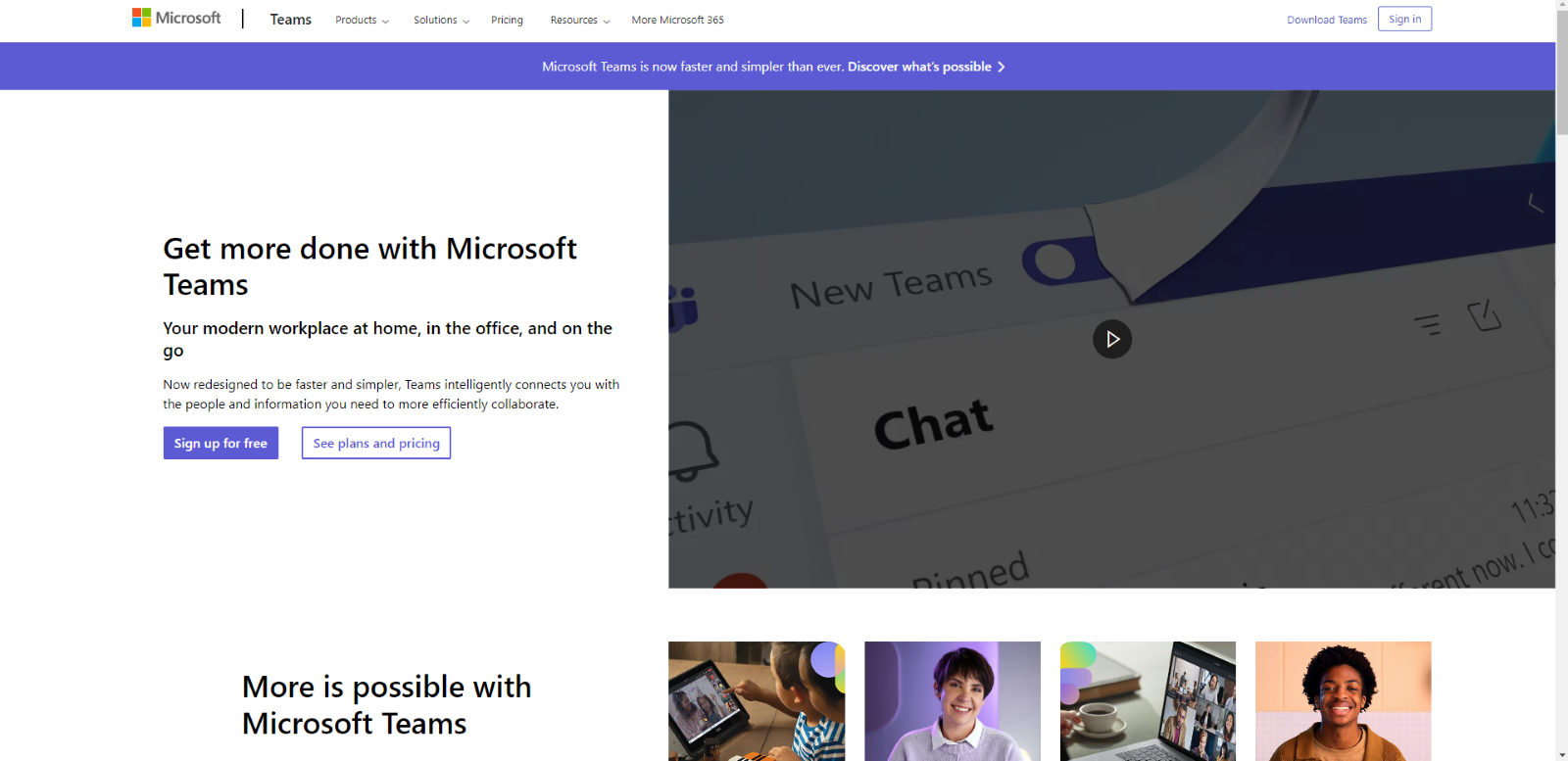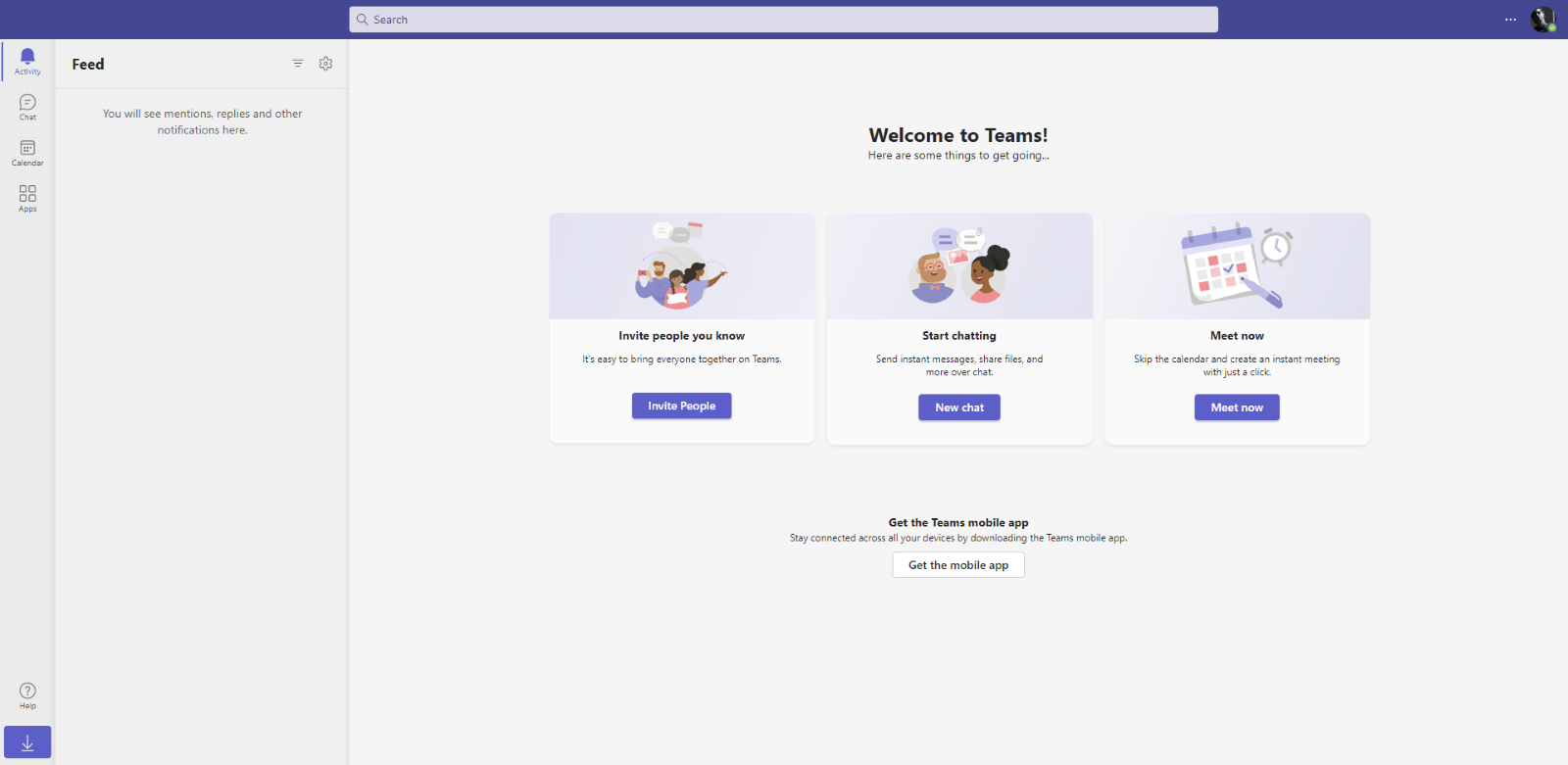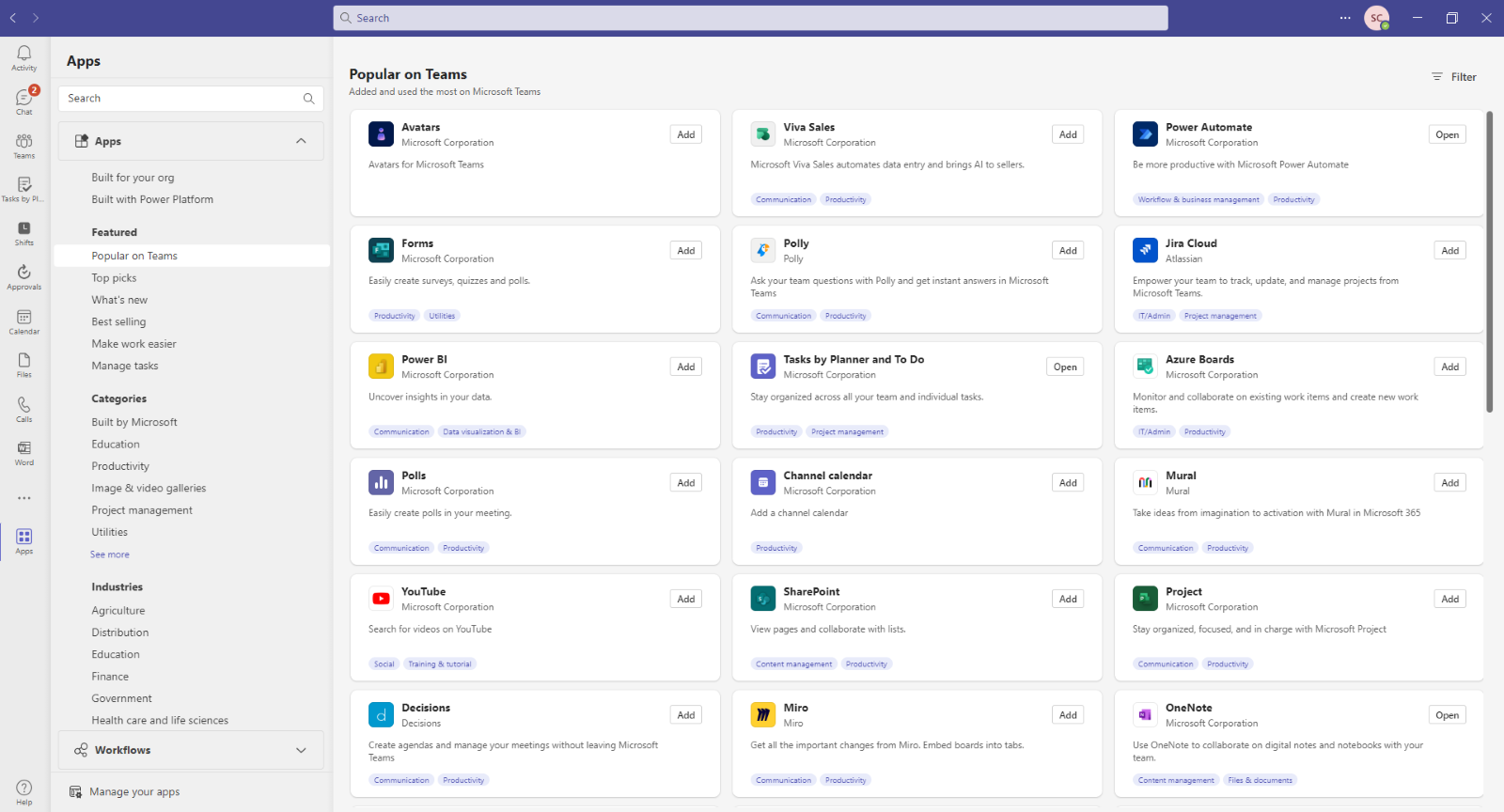We may not have the course you’re looking for. If you enquire or give us a call on 01344203999 and speak to our training experts, we may still be able to help with your training requirements.
Training Outcomes Within Your Budget!
We ensure quality, budget-alignment, and timely delivery by our expert instructors.

Microsoft Teams has become an essential tool for collaboration and communication in both professional and personal settings. Whether you're working remotely, managing a team, or simply looking for an efficient way to connect with others, Microsoft Teams provides a comprehensive platform to streamline your workflow. In this blog, we will walk you through How to Use Microsoft Teams, helping you become proficient in no time.
Table of Contents
1) An introduction to Microsoft Teams
2) Getting started with Microsoft Teams
3) Navigating the Microsoft Teams interface
4) Creating and managing Teams
5) Channels and conversations
6) Collaboration with files and documents
7) Scheduling and conducting meetings
8) Tips and tricks for effective communication
9) Best practices for using Microsoft Teams
10) Conclusion
An introduction to Microsoft Teams
Microsoft Teams can be defined as a powerful collaboration tool that facilitates individuals and teams to communicate, share files, and collaborate seamlessly. With its user-friendly interface and extensive range of features, it has gained immense popularity among businesses, educational institutions, and various organisations.
This guide is designed for novices who are new to Microsoft Teams and want to learn how to use it effectively. Whether you're an employee, a student, or a team leader, this guide will provide you with the knowledge as well as skills to navigate and utilise Microsoft Teams efficiently.
Getting started with Microsoft Teams
This section of the blog will guide you on how to get started with the platform.

Downloading and installing Teams
To begin using Microsoft Teams, follow these simple steps:
1) Visit the official Microsoft Teams website.
2) Download the suitable version for your device (Windows, macOS, iOS, or Android).
3) Install Microsoft Teams by double-clicking on the downloaded file and following the on-screen instructions.
Creating a Teams account
Once installed, you'll need to create a Microsoft Teams account:
1) Launch the Microsoft Teams application.
2) Click on "Sign up for free" or "Create account."
3) Type in your email address and fill in a strong password.
4) Fill in your personal information and complete any required security verification.
5) Accept the specified terms of service and privacy policy.
6) Click on "Create account" or "Sign up" to finish.
Now you're ready to log in and explore the features of Microsoft Teams. Keep your login credentials secure, and consider enabling two-factor authentication for added protection.
Unleash the maximum potential of Microsoft Teams with our comprehensive Microsoft Teams Masterclass - register now!
Navigating the Microsoft Teams interface
Once you have installed and logged into Microsoft Teams, it's essential to familiarise yourself with the interface. Navigating the interface efficiently will allow you to access the various features and components of Microsoft Teams with ease. Here's a detailed overview of the key elements of the Microsoft Teams interface:
1) Sidebar: The sidebar is present on the left-hand side of the screen and provides quick access to different areas of Microsoft Teams. You'll find tabs for Teams, Chat, Calendar, Calls, and Files. Clicking on each tab will take you to its respective section.
2) Activity feed: The activity feed is located in the top left corner of the interface. It displays notifications, mentions, and updates from the teams and channels that you are a member of. You can also access your recent conversations and files from here.
3) Command bar: The command bar is situated at the top of the screen. It allows you to search for specific teams, channels, messages, or files. You can also make use of the command bar to initiate calls, start a new chat, or join a meeting.
4) Teams and channels: In the main area of the interface, you'll find your teams and channels. Teams represent groups of people with common objectives or projects, while channels are specific areas within a team for focused discussions. Clicking on a team or channel will display its conversations, files, and other related information.
5) Conversation pane: The conversation pane is where you can view and participate in discussions within a team or channel. It displays messages, replies, and any shared files or documents. You can compose new messages, reply to existing ones, and react to messages using emojis.
6) Content and tabs: Within each channel, you can add various tabs to access and collaborate on different types of content. For example, you can add tabs for Files, OneNote notebooks, SharePoint sites, and more. Each tab provides a dedicated space for working with specific content.
7) Chat and calls: To access the chat and calling features, click on the Chat or Calls tab in the sidebar. The chat section allows you to have one-on-one or group conversations with your colleagues. The calls section lets you make audio and video calls, initiate meetings, and manage your call history.
Creating and managing Teams
Creating and managing teams is a fundamental aspect of Microsoft Teams that allows you to bring together individuals with common goals or projects. In this section, we'll explore the steps to create a team and discuss how you can effectively manage its settings and members.
Creating a new team
Creating and managing teams in Microsoft Teams is crucial for effective collaboration. Follow these steps:
1) In order to create a team, click on the "Teams" tab in the sidebar.
2) Click on the "+ Join or create a team" option and choose "Create a team."
3) Select "Private" or "Public" and provide a name and description.
4) Optionally, add members by email or from your organisation's directory.
5) Set privacy, permissions, and click "Create."
Managing a new team
To manage teams:
1) Click the three dots (...) next to the team name and choose "Manage team."
2) Adjust settings, permissions, and privacy.
3) Create channels to organise discussions and content.
4) Add tabs for external tools or integrate apps for added functionality.
5) Manage team membership, roles, and permissions.
6) Configure notification settings for relevant updates.
7) Effective team management ensures a productive collaborative environment. Regularly review and update settings as needed. Now you can create and manage teams in Microsoft Teams, fostering seamless communication and collaboration.

Channels and conversations
Channels and conversations are vital for communication and collaboration in Microsoft Teams. Here's a quick overview:
1) Channels: Dedicated spaces for specific topics or projects within a team. Create channels, and add tabs for easy access to relevant content.
2) Conversations: Engage in discussions by starting conversations, replying to messages, mentioning team members, adding attachments, and using emoji reactions.
Effective utilisation of channels and conversations ensures streamlined teamwork and efficient communication. Now you have a solid understanding of channels and conversations in Microsoft Teams.
Take charge of Microsoft Teams with our expert-led Managing Microsoft Teams MS700 course Sign up now! And become a master in team collaboration!
Collaboration with files and documents
Collaborating on files and documents is a fundamental aspect of teamwork in Microsoft Teams. The platform is known to provide a wide range of features that facilitate seamless collaboration and efficient document management. Let's explore how you can effectively collaborate on files and documents within Microsoft Teams.
Uploading and sharing files
In order to upload and share files with your team members, follow these simple steps:
1) Uploading files: In a channel or chat, navigate to the "Files" tab present in the navigation bar. Click on the "Upload" button and choose the files that you want to upload from your device. You can also drag and drop files directly into the Teams interface for added convenience.
2) Sharing files: Once you have uploaded a file, you can share it with your team. You can simply click on the file to open, and then click on the "Share" button. Additionally, you can also choose to share the file with either specific team members or the entire team. Additionally, you have the flexibility to set permissions to control who can view or edit the file.
Collaborating on documents
Microsoft Teams provides several powerful collaboration features to work on documents together. Here are some essential functions:
1) Real-time editing: When you open a document within Teams, multiple team members can simultaneously edit the document in real-time. Changes that have been made by one person are instantly visible to others, allowing for seamless collaboration and avoiding version control issues.
2) Version History: Teams automatically tracks document versions, enabling you to access and restore previous versions if needed. This feature provides peace of mind, allowing you to revert to any earlier version of a document if necessary. To access the version history, simply click on the "..." button next to the document and select "Version History."
3) Commenting and @Mentions: Collaborating on documents involves discussions and feedback. Teams allows you to leave comments on specific sections of a document, making it easy to provide feedback or ask questions. You can also use the "@" symbol followed by a team member's name to mention them in a comment, ensuring they receive a notification and directing their attention to your input.
4) Co-authoring: Co-authoring enables multiple team members to work on a document simultaneously. This feature promotes efficient collaboration and reduces the need for time-consuming back-and-forth file sharing. Team members can work together in real-time, making edits and contributions concurrently.
Integration with Microsoft 365 apps
Microsoft Teams seamlessly integrates with various Microsoft 365 apps, enhancing collaboration capabilities. Here are a few notable integrations:
1) Microsoft OneDrive: Teams integrates with OneDrive, allowing you to access and share files stored in your OneDrive directly within Teams. This integration ensures a seamless experience when working with files.
2) Microsoft SharePoint: SharePoint integration provides easy access to SharePoint document libraries within Teams. You can share, collaborate, and manage documents stored in SharePoint directly in Teams, ensuring efficient document management and collaboration.
3) Microsoft Office apps: Teams provides in-app access to popular Microsoft Office apps like Word, Excel, and PowerPoint. You can create and edit documents within Teams, leveraging the powerful functionality of these apps without leaving the Teams environment. This seamless integration streamlines document collaboration and enhances productivity.
By utilising the collaboration features offered by Microsoft Teams, you can effectively work together on files and documents, ensuring streamlined teamwork and enhanced productivity.

Scheduling and conducting meetings
Scheduling and conducting meetings in Microsoft Teams is a breeze with its powerful features. Here's how:
1) Scheduling meetings: Access the "Calendar" tab and click "+ New Meeting" to create a meeting. Fill in the details, invite participants, and configure meeting options. Send invitations to participants.
2) Conducting meetings: Participants join the meeting by clicking the meeting link. They can control their video and audio settings, share their screen, use the meeting, chat for communication, and record the meeting for future reference.
3) Integration with Outlook: Easily schedule and manage meetings through seamless integration with Outlook. Changes made in Teams or Outlook are synchronised, simplifying the scheduling process.
By using Microsoft Teams, you can efficiently schedule and conduct meetings, fostering collaboration and communication within your team.
Tips and tricks for effective communication
Effective communication is crucial for successful collaboration in Microsoft Teams. To enhance your communication skills and make the most of the platform, consider these helpful tips and tricks:
Clear and concise messaging
a) Be clear: When sending messages, ensure your communication is clear and easily understandable. Use concise language and avoid ambiguity to convey your message effectively.
b) Get to the point: Be mindful of others' time and keep your messages concise. Get straight to the point, highlighting the key information or action required.
Utilise @mentions and reply threads
a) @Mentions: To get someone's attention or involve them in a conversation, use the @ symbol followed by their name. This ensures they receive a notification and directs their attention to your message.
b) Reply threads: When responding to a specific message, use the reply thread feature. This keeps conversations organised and makes it easier for others to follow along.
Emojis and GIFs
a) Emojis: Use emojis to add a touch of emotion or express appreciation. They can help convey tone and make your messages more engaging and friendly.
b) GIFs: Spice up conversations with GIFs to add some humour or visual appeal. GIFs can help create a light-hearted atmosphere and make communication more enjoyable.
Audio and video calls
a) Choose the right medium: For more complex discussions or when tone and visual cues are important, consider using audio or video calls instead of written messages. This allows for more effective communication and better understanding.
b) Use background blur: When participating in video calls, utilise the background blur feature to minimise distractions and maintain focus on the discussion.
Status and availability
a) Set your status: Use the status feature to indicate your availability and current activities. This helps others know when you're free to chat or collaborate.
b) Update your presence: Keep your presence status up to date, indicating whether you're available, busy, away, or offline. This provides visibility to your team members regarding your availability.
Channels and tags
a) Organise conversations with channels: Use channels to categorise discussions based on topics or projects. This keeps conversations organised and makes it easier to find relevant information.
b) Utilise tags: Use tags to highlight specific team members or roles in conversations. This ensures that relevant individuals are notified and can easily find messages pertaining to them.

Best practices for using Microsoft Teams
To optimise your collaboration experience in Microsoft Teams, follow these best practices:
1) Maintain organised teams and channels: Create relevant teams and use descriptive channel names for easy navigation.
2) Manage notifications: Customise notification settings and mark priority conversations.
3) Collaborate and share content: Co-author documents and store files within Teams for streamlined teamwork.
4) Explore apps and integrations: Discover and integrate useful apps from the marketplace and integrate them with other Microsoft 365 apps.
5) Maintain professionalism: Follow professional communication etiquette and be mindful of time zones and availability.
6) Regularly review and update: Clean up outdated content and keep profiles and statuses updated.
By implementing these best practices, you can enhance productivity and collaboration in Microsoft Teams.
Conclusion
All in all, this blog has explored How to Use Microsoft Teams effectively, step by step. From getting started with the interface to creating and managing teams, navigating channels and conversations, collaborating with files and documents, scheduling and conducting meetings, and mastering effective communication, we have covered it all. By following the outlined tips, tricks, and best practices, you can make the most of Microsoft Teams and transform the way you collaborate with your team. Whether you are an amateur or seeking to enhance your skills, this guide has provided you with valuable insights on How to Use Microsoft Teams.
Elevate your productivity with our Microsoft Office Training Course Sign up today!
Frequently Asked Questions
Upcoming Office Applications Resources Batches & Dates
Date
 Microsoft Teams Training
Microsoft Teams Training
Fri 5th Jul 2024
Fri 4th Oct 2024
Fri 13th Dec 2024







 Top Rated Course
Top Rated Course


 If you wish to make any changes to your course, please
If you wish to make any changes to your course, please


